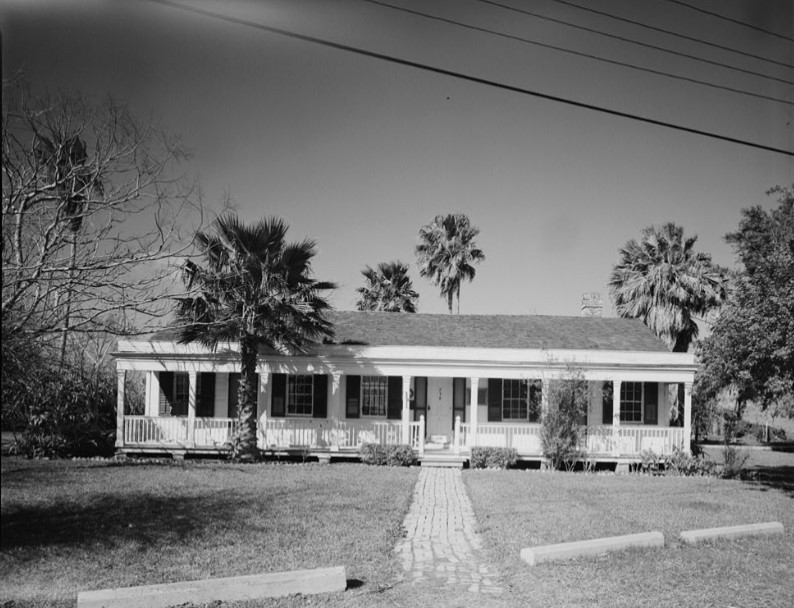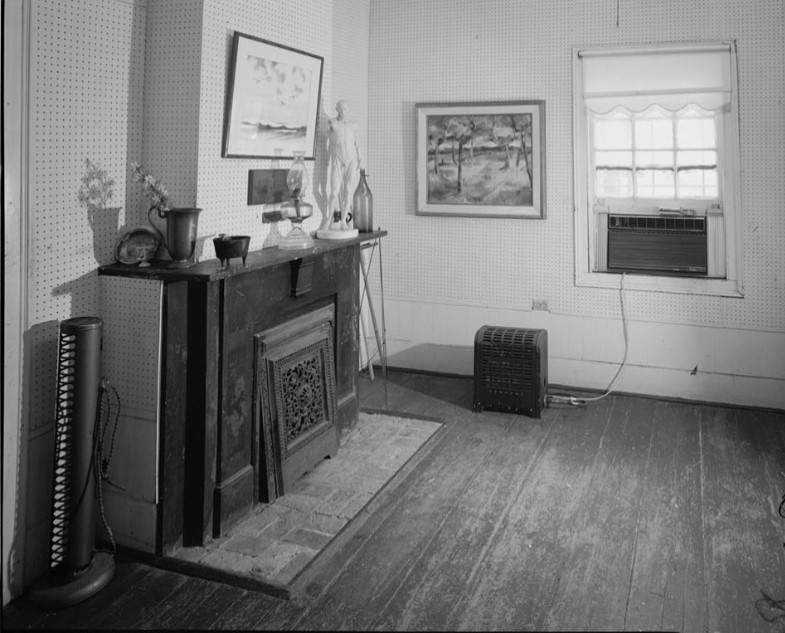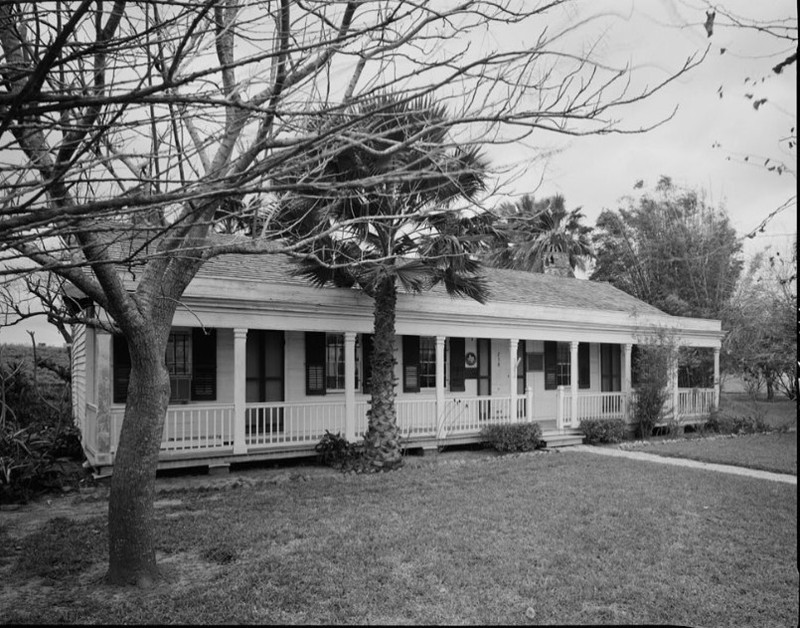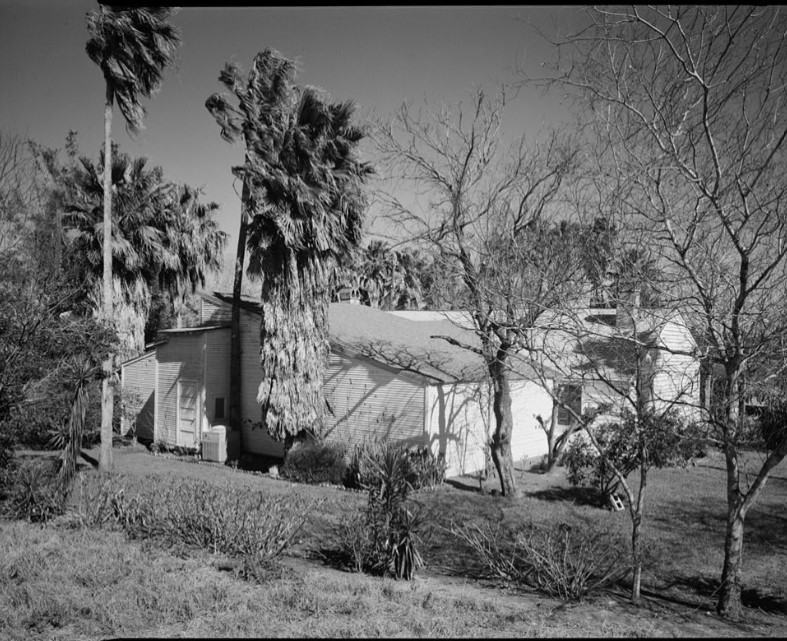Neale House
Introduction
Text-to-speech Audio
Images
Front (east) elevation of Neale House in 1979 photo by Bill Engdahl (HABS Survey TX-3282)

Fireplace with cast iron grill in left end room in 1979 Engdahl photo (HABS Survey TX-3282)

View of Neale House looking northwest in 1979 photo by Bill Engdahl (HABS Survey TX-3282)

View of rear of Neale House looking northeast, 1979 photo by Bill Engdahl (HABS Survey TX-3282)

Backstory and Context
Text-to-speech Audio
William Neale ran away from home at age thirteen and found himself as a cabin boy on an English ship that had secretly been sold to the Mexican government. The ship ended up shelling the Spanish castle of San Juan de Ulloa in 1821 guarding the harbor of Vera Cruz in Mexico. Neale worked for a British mining company in Mexico before returning to England in 1826; he married Una Rutland in 1827 and the couple had fourteen children. The couple moved to Matomoros, Mexico in 1834 and lived there for seven years. Neale established a stage route from the town to Bagdad, the Mexican port at the mouth of the Rio Grande, and later moved to Bagdad. He discontinued the stage line in 1855, since steamships made the same journey. Neale's next enterprise was a mercantile business at Santa Maria, twenty-five miles upriver from what is now Brownsville. He moved to Brownsville by 1856.
A son of William Neale named William Peter Neale was shot and killed in the house during a raid in 1859 by a Mexican General, Juan N. Cortina. During the Civil War, Neale was a Confederate second lieutenant in the Texas Infantry and a captain in the home guard at Fort Brown. Union troops occupied Brownsville for part of the Civil War and reportedly dismantled part of the Neale House for lumber to build barracks. In his April 1897 obituary, the 89-year-old Neale was heralded as one of the oldest inhabitants of Brownsville. He was survived by one daughter, Mrs. Louis Cowen, and, in Brownsville, twenty-one grandchildren and great-grandchildren.
The 1885 Sanborn map of town is one of the earliest drawings of the house. The house tract had three outbuildings in 1885. It is thought that the house originally had a breezeway between the two front rooms which was later enclosed. The house style is more like the frame and double log houses built by early Anglo-American settlers in Texas than the indigenous border style. The lumber in the house was not native to the area and the construction was tongue-and-groove. The one-story wood frame house was divided into three residences according to the 1894 Sanborn map. By 1906, the house was drawn on the Sanborn map as one structure with a long rectangular dogleg addition on the right rear. The house has eight bays along the front: three doors and five windows, behind a full-width porch. The house is supported by concrete piers and has brick chimneys near each gable end.
To enable the Neale House to be moved onto city property, the Brownsville Art League conveyed the house by deed to the City of Brownsville. The city subsequently leased the house to the art league to establish a museum and art gallery. The front porch and four fireplaces were sketched by Ruth McGonigle before the 1950 move so that they could be taken apart and reassembled at the new site. The rear side of the house collapsed during the move and needed to be rebuilt; local building supply companies donated all of the materials for the project. After the move, a number of changes were made in the house, including removal of some of the multi-layered wallpaper and adding new wall coverings. A kitchen and restroom were added as well as an art studio with clerestory windows and supply closets. The house exterior was painted white with green shutters; the iron bars across the windows were painted Black. A modern museum building was constructed north of the house and the old wooden, octagonal bandstand from Fort Brown stands south of the house.
Cite This Entry
Paonessa, Laurie. "Neale House." Clio: Your Guide to History. September 17, 2020. Accessed April 18, 2025. https://theclio.com/tour/1568/1
Sources
Anonymous. "William Neale: The Texas Pioneer Laid at Rest. Sketch of His Life." Daily Herald (Brownsville, TX) April 7th 1897, 3-3.
U of TX Rio Grande Valley. Neale House, Civil War Trail, Cameron County. Accessed September 16th 2020. https://www.utrgv.edu/civilwar-trail/civil-war-trail/cameron-county/neale-house/index.htm.
White, John P. . Bird, Betty et al. Historic American Buildings Survey of Neale House. HABS No. TX-3282. Washington, DC. National Park Service, 1977.
https://www.loc.gov/item/tx0122/
https://www.loc.gov/item/tx0122/
https://www.loc.gov/item/tx0122/
https://www.loc.gov/item/tx0122/

